What Palm Oil Is, and Why It’s Controversial
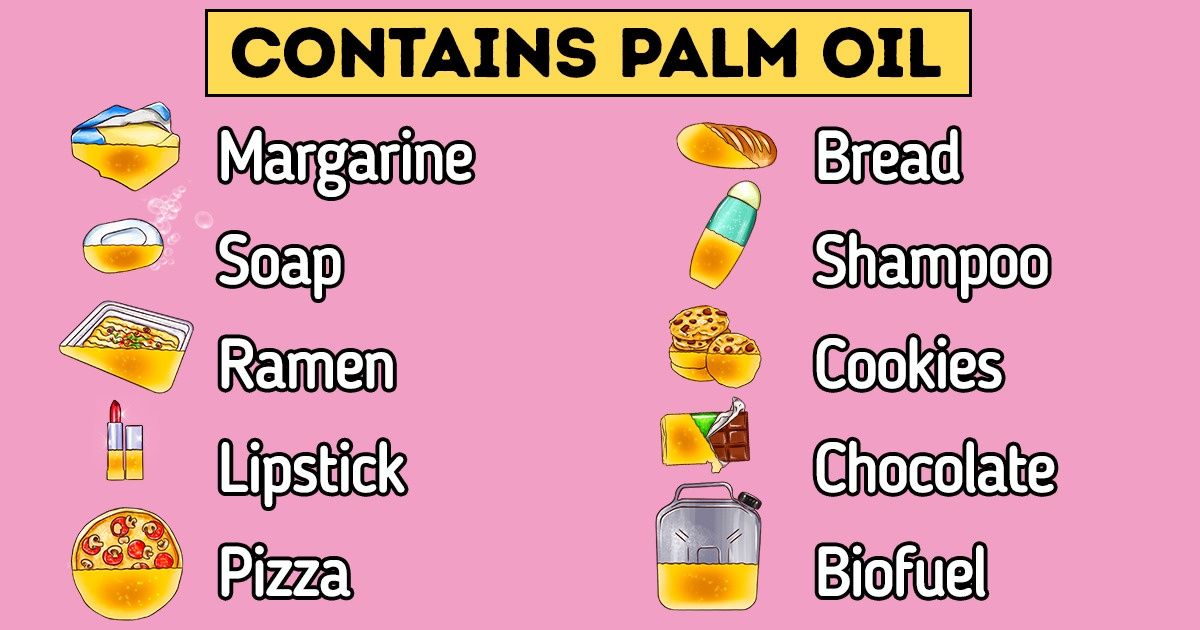
Palm oil is a very popular and controversial product surrounded by hearsay and myths. The most important question is whether foods with palm oil in them should be eaten.
5-Minute Crafts has learned a lot about the topic, and we want to share our thoughts on the good and bad things about palm oil.
What palm oil is
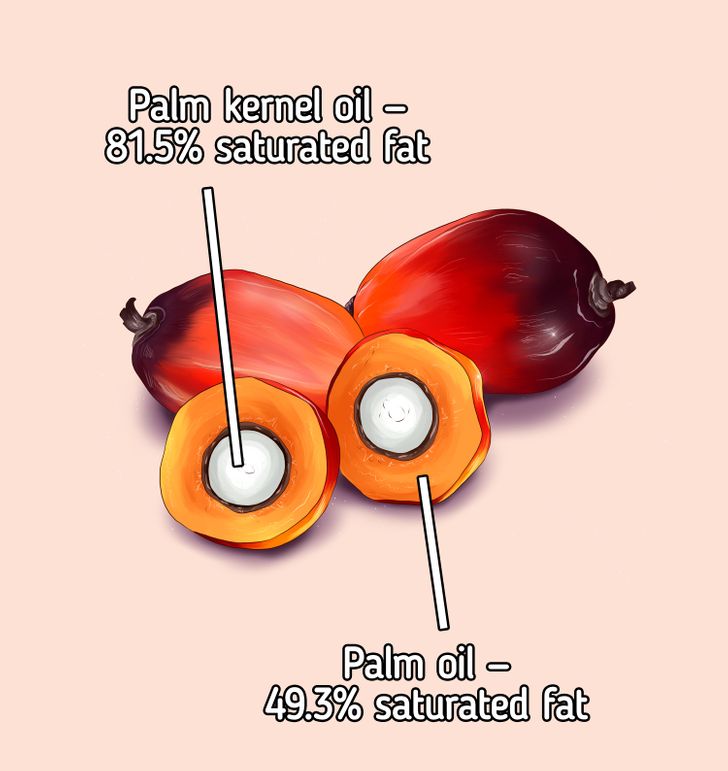
Palm oil is made from the fruits of palms, Elaeis guineensis. Because this plant is really strong, it always gives enough harvest and doesn’t require a lot of pesticides and fertilizers, and it’s really popular around the world.
There are 2 types of oil: crude palm oil and palm kernel oil. Crude palm oil is made by crushing the fruits themselves, and palm kernel oil is made from the pits.
The oil palm tree is a plant that was originally in Africa, but about a century ago, it was imported into South-East Asia as a decorative plant. And today, Indonesia and Malaysia produce about 85% of all the palm oil in the world, even though 42 other countries produce it.
Palm oil is universal. Many of its properties are highly valued.
- At room temperature, the oil is semi-solid, so it can be buttered.
- It’s oxidation-resistant, so the shelf time can be prolonged.
- It remains stable at hot temperatures, so it can make other foods crunchy when fried.
- Palm oil doesn’t have any taste or smell, so it doesn’t change the taste or look of the foods it’s added to.
- In Asia, it’s used like sunflower seed oil or olive oil, which is used in Europe.
Why palm oil is so popular
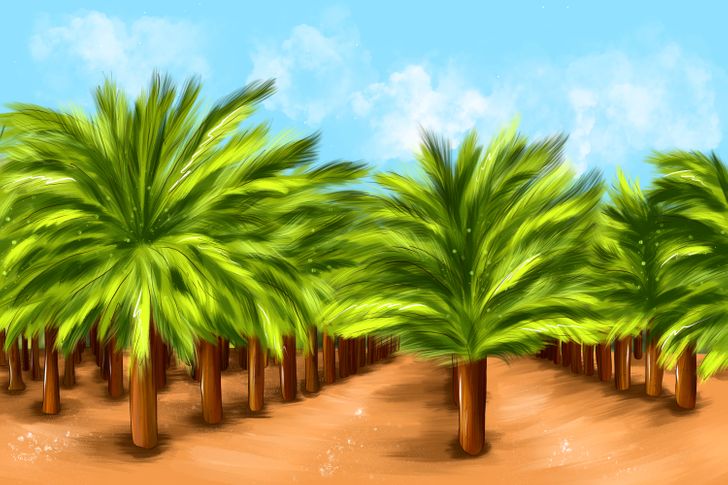
The answer is simple: The palm oil tree is really efficient.
Using the same land, you can get far more palm oil than any other type of oil. If you want to produce a different type of oil, you need anywhere from 4 to 10 times more land.
So if someone wanted to fully replace palm oil with different oil, they would need to use much more space, which would be a serious threat to the environment and the existence of animals.
Where you can find palm oil
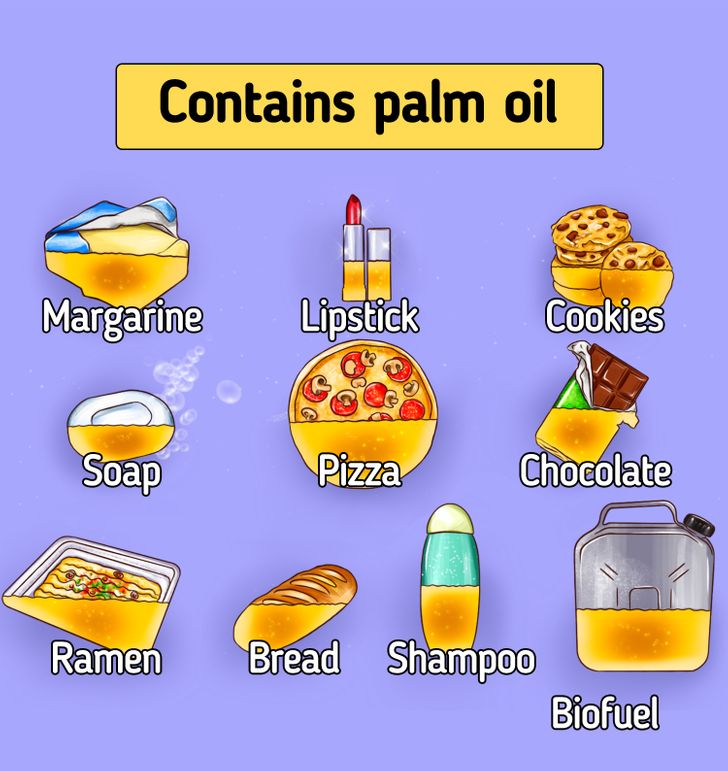
When people started producing palm oil
There has been a lot of debate around palm oil. There are people who are for it and those who are against it. It’s hard to believe that palm oil has such a big history.
In the nineteenth century, archaeologists were able to prove that people ate palm oil and sold it in Egypt more than 3,000 years ago. Scientists were able to find an oily residue from Elaeis guineensis in one of the amphoras they found.
Of course, in the past, very little oil was produced compared to today’s volume. In the middle of the nineteenth century, palm oil was mostly made in South Africa for local needs. But over time, more and more people needed this cheap and easy-to-produce oil.
Why many people fear that palm oil is bad for one’s health
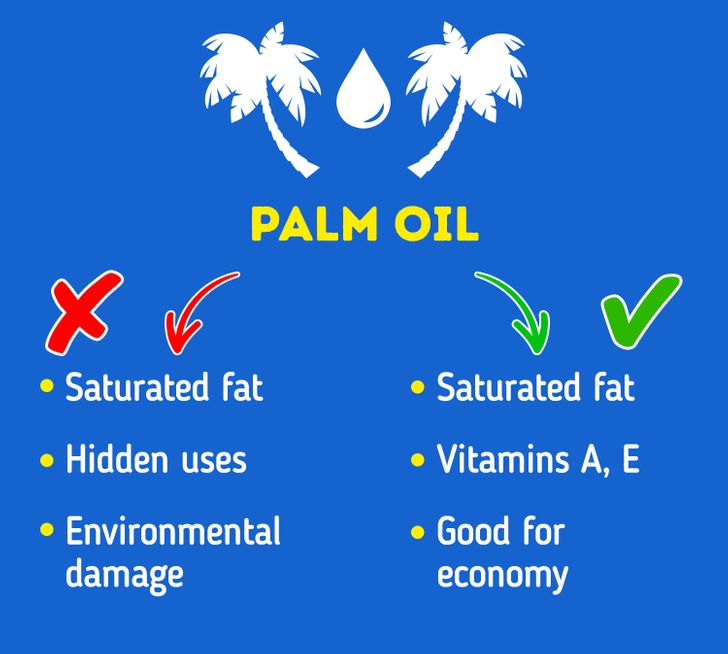
Palm oil and other types of tropical oil don’t have a good reputation because of a high concentration of saturated fats.
Saturated fat is a type of fat in which the fatty acid chains have all single bonds. Due to a high melting point, such fats remain solid at high temperatures.
Where saturated fats can be found in high concentrations:
- Milk and white chocolate, cakes, puddings, and biscuits
- Baked goods and pies
- Fatty meat, such as mutton
- Burgers, bacon, and sausages
- Butter and margarine,
- Coconut oil and palm oil
- Cheese, milk, yogurt, and cream
The fats of plants and fish are mostly not saturated.
It’s recommended to cut down on saturated fats to make your health better and lower the risks of cardiovascular disease and diabetes.
Fats are necessary for the body and are part of vital processes. Most foods contain both saturated and non-saturated fats. It’s perfectly normal to eat both. It’s only a matter of quantity. It’s better to eat foods with a lower concentration of saturated fats.
Trans fats are more dangerous, and the solution is palm oil. The concentration of saturated fats in it is 49.3 grams in 100 grams. It’s less than palm kernel or coconut oil (81.5 grams in 100 grams in palm kernel oil and 82.5 grams in coconut oil), and less than in butter (50,5 grams in 100 grams).
Palm oil is a great solution for restaurants and food manufacturers that want to avoid using trans fats.
What studies show
Reputation is one thing and science is something else. There’s no definite answer as to whether palm oil is bad for you. There are a series of studies that have been done in different countries. Some of these countries produce palm oil, others don’t.
When analyzing different studies, scientists have come to the conclusion that the main argument against palm oil is the concentration of palmitic acid that increases cholesterol levels. But studies done on animals and humans show that eating palm oil doesn’t lead to an increase in cholesterol levels.
How to minimize the risk
There is only one thing we can say for sure: it’s better to eat less saturated fat and trans fats, have a balanced diet, and visit your doctor regularly.
Of course, the palm oil you eat has to be eco-friendly and certified as well.
Why palm oil is good
The good news is that palm oil has good properties.
- Palm oil contains oleic acid and linoleic acid.
- It contains vitamins A and E, which are powerful antioxidants.
- Palm oil is used to treat vitamin A deficiency.
- Palm oil doesn’t require as many pesticides and fertilizers as other oils.
- Palm oil production gives people jobs.
The harmful part of palm oil that is difficult to ignore
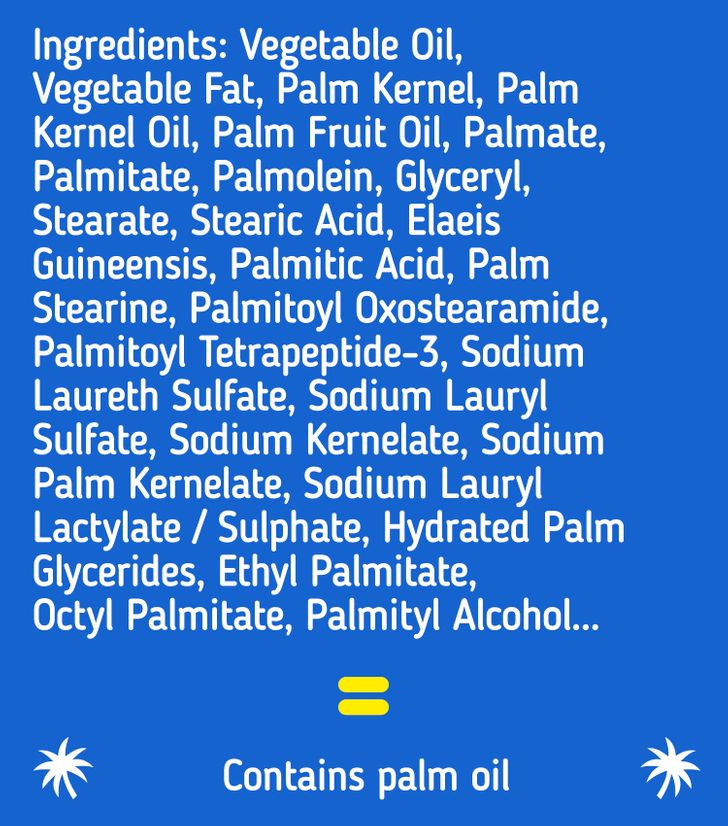
- The biggest harm palm oil does is deforestation. Species like orangutans, dwarf elephants, and Sumatran rhinoceros are in danger of extinction.
- There’s evidence that labor norms are violated, and even child labor is used in plantations.
- Dishonest manufacturers add palm oil to their products but try to hide this fact. So there’s a list of names that indicate a product contains palm oil.